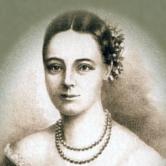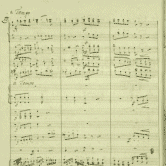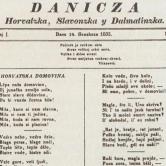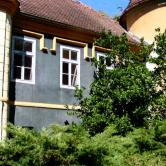Personage > Sidonija Rubido Erdödy, Esq.
Sidonija Erdödy Rubido was born on February 2, 1819, on Razvor estate, near a place called St Peter, above the hilltop of Sveta gora (St Mount) with the Chapel of Our Lady of Jerusalem. At that time there was no maternity hospital in Zagreb, but her name was enlisted in the registry of births within the Parish of St Mark.The legend has it that countess Rubido was the first to sing the Croatian anthem (Croatian Homeland) from her castle in Gornja Rijeka, following the lyrics of the author of croatian anthem, Antun Mihanovic, and accompanied by Josip Runjanin, who composed the music for the anthem. Still, there is no historical evidence to confirm the legend, and other poems, like Livadić’s Još Hrvatska ni propala (Croatia Has Not Yet Fallen), were also considered to be Croatian anthems, which might have caused the confusion.
She responded to the ideals of the Illyrian movement with her youth, the centuries of her heritage, and her remarkable music education. She was Colorature soprano raising interest of musicians who offered her to perform as an opera singer while she stayed in Vienna (1839-1841). Sidonija Rubido was rehearsing a lot to perform the title role in opera Ljubav i zloba (Love and Malice) by Vatroslav Lisinski, which had the premiere on March 28, 1846. Her performance as Ljubica received glowing reviews, and critic Stanko Vraz evaluated her performance:After a great success of Ljubav i zloba (Love and Malice), Sidonija Erdödy Rubido stopped performing. She got involved in charity work, founding the first National Center for Abandoned Children in Zagreb.
She was glowing throughout the performance, our homeland’s precious jewel of exceptional talent and brilliant mind, Countess Sidonija Rubido Erdödy. She proved to be a worthy descendant of a glorious Croatian family, ready to make sacrifice for her homeland. If it hadn't been for her outstanding performance, the opera wouldn't have come to life. So long shall live her name in Croatian art. Only her warm, lyrical, clear and trained voice, swirling and flaring like a flame, could convey so truly and amazingly all the demanding melodies of the opera. After the performance, people gathered around her, giving her a great cheer, and bunches of flowers, as beautiful as those blossoming in her heart.
Sidonija had to work hard on her role as Ljubica, since she had to revive a girl who was torn between her duty and the love of a man, only to fall into the arms of her loved one in the end. It was also difficult to sing this role, since the arias were full of coloratures, requiring vocal versatility combined with dramatic expressiveness. She sang the role of Ljubica seven times at the stage on St Mark’s Square in Zagreb in the period from March 28 to April 24, 1846. She also performed on October 23 or 24, 1847, when Croatian Assembly recognized Croatian as the official language in Croatia.
After 1847 she withdrew to her castle Rubido in Gornja Rijeka, where she lived a religious life with her family. She donated the money for the restoration of the parish church, attending the mass regularly. She also supported education provided in the village school. She died in Gornja Rijeka, and was buried there, in a family burial place, near the castle.





